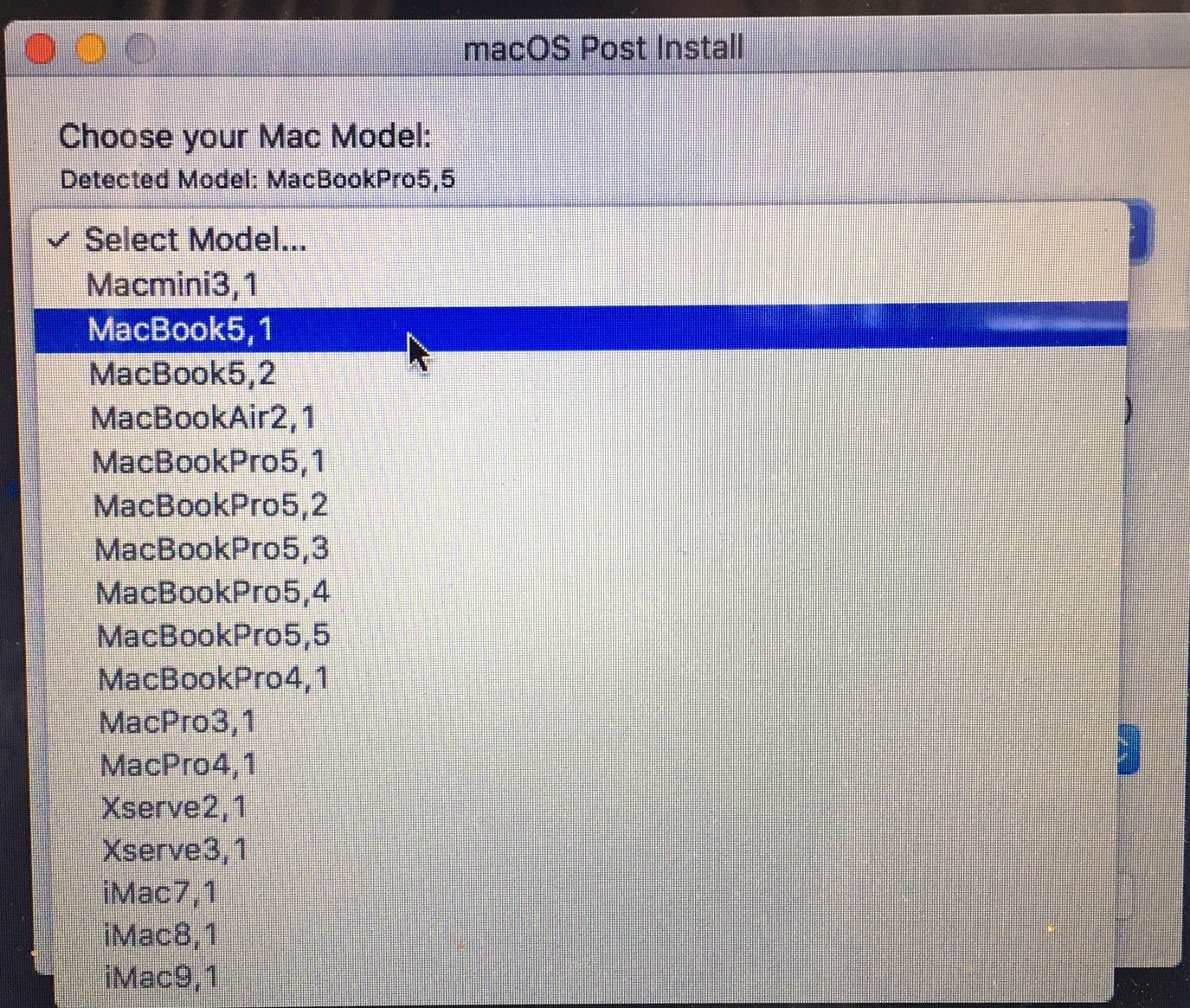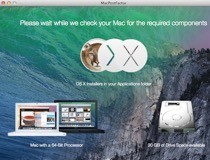There are known vulnerabilities for Mac OS X 10.9 'Mavericks' that are not addressed by Apple. Users should migrate as soon as possible to a fully supported version of OS X, see https://information-technology.web.cern.ch/services/fe/howto/software-updates-mac.
The information below is only for historical reference.
Attempting to install Catalina on an unsupported Mac is in no way supported by Apple, and you are doing so at your own risk. MacRumors cannot be held liable for any data loss or damage as a result. Yosemite / Mavericks / Mountain Lion on Unsupported Mac This page is dedicated to Sfott, this “little” piece of code I did to automate the creation of USB key with the boot.efi from Tiamo’s of MacRumors. Install OS X Mavericks on OLD Mac Pro. If playback doesn't begin shortly, try restarting your device.
My suspicion is that the new installer will use it’s own boot.efi / PlatformSupport.plist file(s) preventing you to upgrade using the App Store. My reasoning is that I tried to download the Mavericks Install file from the App Store on the Mac Pro and the App Store prevented the download from happening since the Mac Pro is unsupported. My best advice for any Hackintosh install, is get things installed on a real mac first, and then modify things to work on your unsupported rig. This worked for both the Xserve and my i7 PC. I had a junky MacBook Pro sitting around I did the Mavericks install with, and then modded the PlatformSupport.plist. Install 10.8 on old unsupported Mac. It is a very long thread. I still don't definitively know if you can get the OS X 10.7 64-bit kernel running on your specific kind of Mac, but I suspect for the reasons mentioned in this image from the MacRumors forum thread that you can't. Install Mavericks on Unsupported.
Mac Os Mavericks Iso
Mac Os On Unsupported Mac
- 'Thirty two sixty four for Mac OS X' search that in Google, you can run Mavericks and Yosemite on any unsupported mac with at least a core duo processor, just down load the software and follow the directions. And FYI you can install windows 10 on any Intel mac.
- The 1.6.5 installer for Mountain Lion refuses to install on Mavericks, so if you want to use it on Mavericks you must install it before you migrate or hack the install package to disable the OS version check. ROOT v5-34-12 builds and runs fine on Mavericks. Previous versions don't and won't.

Mac OS X 10.9 Mavericks is available since October 22nd 2013. It can be installed directly from the Apple AppStore, or via our NetInstall server (see https://information-technology.web.cern.ch/services/fe/howto/install-os… for details anbout our NetInstall service).
There are three important actions to take before you install Mavericks:
- Ensure that all the software you are using is compatible with it.
- Verify your hard-disk or SSD before doing the install.
- Make sure you have a recent backup, allowing you to recover your data in case of problems
Known Issues
Here we summarise a list of known issues that has been brought to our attention. Please note that this list is by no means complete.
Authentication
Upgrade Unsupported Mac
Smart boardslcsd educational technology resources. Using Network Groups from Active Directory (egroups in CERN speak) does not work properly. It might work for accounts that are members of few egroups only.
External Hard Disks
Western digital is warning anout potential data loss when using its drive manger software under Mavericks. Details are available from http://community.wd.com/t5/News-Announcements/External-Drives-for-Mac-E… . Users of Western Digital drives should uninstall the WD Drive Manager, WD Raid Manager and/or WD SmartWare before upgrading to OS 10.9.
Mobile device syncing
Mavericks has disabled local syncing of most data, you have to use iCloud for syncing of most data types. Shsat handbook 2016 2017. Depending on your settings this might include (and thus expose) all the passwords stored in your keychain!
Openafs
OS X 10.9 requires openAFS version 1.6.6, released on January 24th 2014, or higher. The version 1.6.5 for Mountain Lion appears to work for most cases, but there is a problem when editing files in afs directly from emacs or when creating symlinks within the afs space. The 1.6.5 installer for Mountain Lion refuses to install on Mavericks, so if you want to use it on Mavericks you must install it before you migrate or hack the install package to disable the OS version check.
ROOT
ROOT v5-34-12 builds and runs fine on Mavericks. Previous versions don't and won't.

XQuartz
Install Osx On Unsupported Mac
The XQuartz developers recommend to use 2.7.5 or later (http://xquartz.macosforge.org/landing). Springfield krag serial number lookup.
UpdatesImportant Notes:
- Using APFS is REQUIRED in Mojave in order to receive system updates via the normal Software Update method. If you choose to continue using macOS Extended (Journaled) as your filesystem type, you will NOT receive System Updates via System Preferences. If you are not using APFS, you can follow the 10.14.1 installation steps below.
- After applying ANY system update via Software Update, re-applying post-install patches using your Mojave Patcher installer volume will most likely be necessary. If you install a software update and the system fails to boot afterwards, this is what needs to be done.
10.14.6

10.14.6 can be updated normally via Software Update if using an APFS volume, and will need to be patched using an installer volume created with Mojave Patcher version 1.3.2 or later after installing.
10.14.5
10.14.5 can be updated normally via Software Update if using an APFS volume, and will need to be patched using an installer volume created with Mojave Patcher version 1.3.1 or later after installing.
10.14.4
10.14.4 adds new changes that ARE NOT patchable by the post-install tool of Mojave Patcher v1.2.3 and older! Before updating to 10.14.4, you you will need to use the latest Mojave Patcher version to create a new installer volume, using the 10.14.4 installer app. Then, update to 10.14.4, either by installing via Software Update, or by just using the installer volume you've created to install.
10.14.3
If you are currently running 10.14.1 or 10.14.2, you can simply use the Software Update pane of System Preferences (if using APFS) to apply the 10.14.3 update. Once the update is installed, you will most likely need to re-apply post-install patches to get the system to boot again. This process is detailed in steps 8 - 10 above. If you are currently running 10.14.0, you'll need to proceed with the 10.14.1 update method described below.
10.14.2
If you are currently running 10.14.1, you can simply use the Software Update pane of System Preferences (if using APFS) to apply the 10.14.2 update. Once the update is installed, you will most likely need to re-apply post-install patches to get the system to boot again. This process is detailed in steps 8 - 10 above. If you are currently running 10.14.0, or are using a non-AFPS volume, you'll need to proceed with the 10.14.1 update method described below.
10.14.1/macOS Extended (Journaled) volumes
The Mojave 10.14.1 update does NOT install properly on unsupported machines, and could result in an unbootable OS. If you want to install the 10.14.1 update (and are not currently running 10.14.1), perform the following steps:
• Download the latest version of Mojave Patcher
• Download the installer using the Tools menu of Mojave Patcher
• Create a patched USB installer
• Boot from that, and install 10.14.1 onto the volume containing an older release.
• Once done, apply the post-install patches, and you should now be on 10.14.1.
Comments are closed.